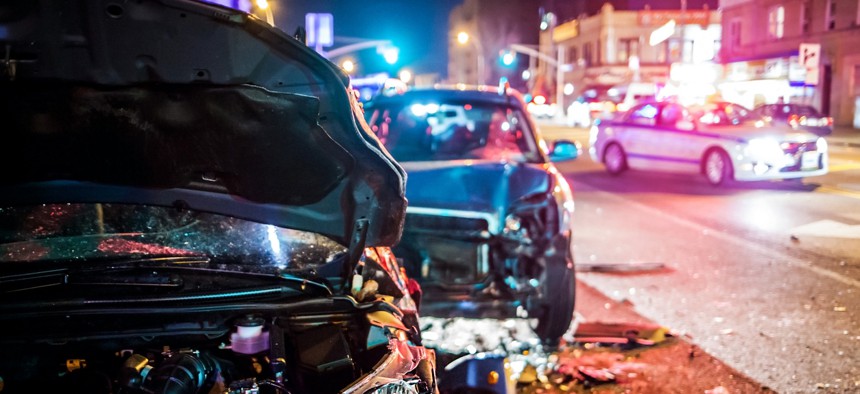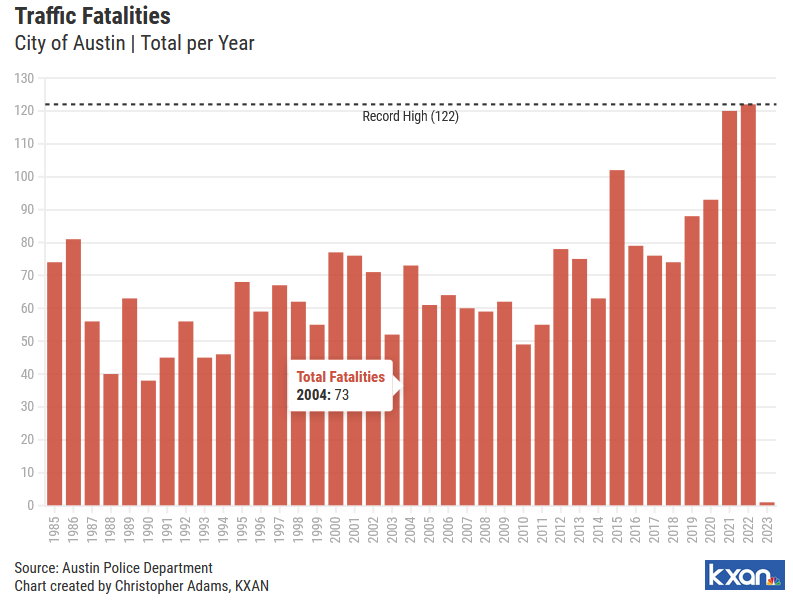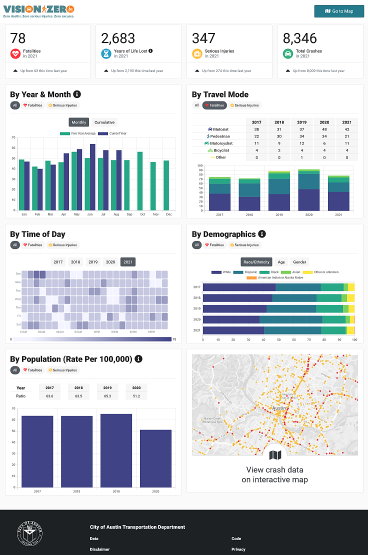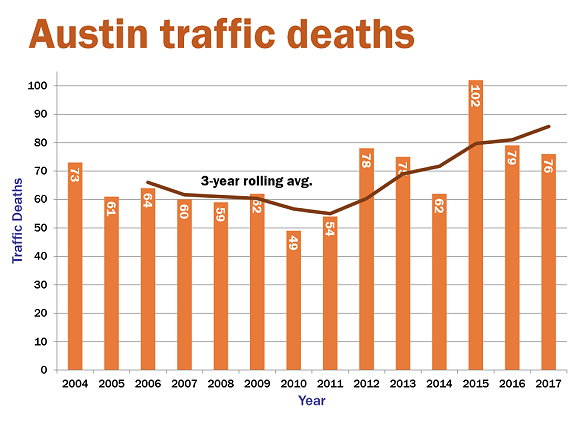
Clearly, speeding endangers not only the life of the speeder, but all the other drivers on the road, not to mention bicyclists, joggers, pedestrians and anyone else using the road, sidewalk and other adjacent areas. Portland, Oregon offers a prime example of the current state of affairs recording its fourth consecutive year of increases in traffic fatalities. When reviewing these incidents, the city identified several contributing factors to these fatal crashes
- 58% of traffic fatalities occurred on roads where the speed limits exceed those recommended by state statutes.
- 44% occurred on roads with little or no traffic calming measures.
- 54% involved trucks or SUVs, both of which are proving to be extraordinarily dangerous to others on the road.
- 58% took place at night, often in areas with poor lighting.
What can communities do to prevent this kind of mayhem on our roads? While there is no single solution, more than 40 communities have committed to Vision Zero, a multidisciplinary approach to eliminating all traffic fatalities and severe injuries.
Vision Zero represents a significant departure from the status quo in recognizing that since people inevitably will make driving mistakes, road systems and policies must be designed to ensure that such mistakes do not lead to severe injuries or fatalities. To achieve that, traffic planners and engineers policymakers and public health professionals must work together to improve the roadway environment, traffic policies and other related systems to lessen the severity of vehicle crashes.
For Vision Zero communities, this has translated into several concrete steps designed to prioritize safety and access, beginning with speed management through reduced speed limits, enhanced law enforcement and regular use of speed cameras.
In New York City, former Department of Transportation Deputy Commissioner Michael Replogle reports, “On Queens Boulevard, a street once dubbed the “Boulevard of Death,” 18 pedestrians were once killed in a single year. Under Vision Zero, we made transformative changes including lowering the speed limit from 30 mph to 25 mph. Queens Boulevard has now gone more than three years without a cyclist or pedestrian fatality [and] speed cameras have reduced speeding by up to 60% on streets in front of schools.”
Traffic calming measures employed in other Vision Zero communities have ranged from installing speed bumps, roundabouts, medians and central turn lanes to decreasing the number of vehicle travel lanes and narrowing existing lanes. These measures all have helped reduce the speed and volume of vehicle traffic, while giving pedestrians and bike traffic sufficient room to travel safely.
Other Safety Challenges
Controlling speed, however, is only part of the problem. As Portland demonstrates, a significant number of traffic fatalities are caused by poor highway lighting. That dovetails with a World Health Organization study which shows that a third of all pedestrian casualties had difficulty seeing the vehicle that struck them, while 40% of drivers had difficulty seeing the pedestrian. Similarly, a recent Japanese report found there was a 43% reduction in night-time accidents following installation of bright, broad-spectrum lighting.
In addition to improved highway lighting, pedestrian safety can be impacted by installing a notification system that alerts drivers when a pedestrian is in or about to enter a crosswalk. Pedestrian fatalities can also be lowered through installation of inroad LEDs for crosswalks, dynamic sensing devices that extend crossing times and high-quality mid-block crossing signals. Plus, raised crosswalks—speed humps placed where pedestrians are known to cross the road—can be employed to slow vehicle movement and reduce the number of accidents involving pedestrians.
Some Vision Zero communities are even moving to limit or completely ban large trucks in favor of smaller vehicles with more maneuverable cab-over designs in which the driver sits over the wheel axle instead of behind the nose of the truck. This comes in the wake of a new report by the Volpe Center that shows that garbage trucks, fire trucks and commercial freights trucks are responsible for nearly 8% of pedestrian fatalities and more than 10% of bicycle fatalities, although they comprise only 4% of vehicles on the road.
Bottom line, there is no single way to achieve Vision Zero. In Santa Monica, California installation of a new, two-way protected bikeway created a safe, calm route from the downtown rail station to the California Incline bike path, connecting 22 uninterrupted miles of beach/bike path. In Tempe, Arizona, the city’s first major roundabout, accommodating both traditional roadway users and a newly constructed Tempe streetcar, replaced an existing signalized intersection, helping the city to take a major step toward achieving its Vision Zero goals.
While there may be numerous ways to implement a Vision Zero initiative, the bigger issue may be obtaining the community consensus to make it happen. Currently, too many U.S. communities regard traffic fatalities as a regrettable, but inevitable side effect of modern life. That complacency often makes it difficult for community leaders to give Vision Zero goals the priority they deserve.
Despite such impediments, it is essential for communities to recognize the toll that traffic fatalities extract beyond personal loss. Deep community impacts range from personal economic costs to destruction of property to significant taxpayer expense for emergency response and long-term health care costs, must also be considered. In short, communities must move beyond immediate concerns over costs and congestion to adopt a broader, more all-encompassing vision of what they can truly become by adopting a comprehensive Vision Zero policy.
by Wes Guckert, PTP, president and CEO of The Traffic Group, a traffic engineering and transportation planning firm serving clients nationally and internationally.




